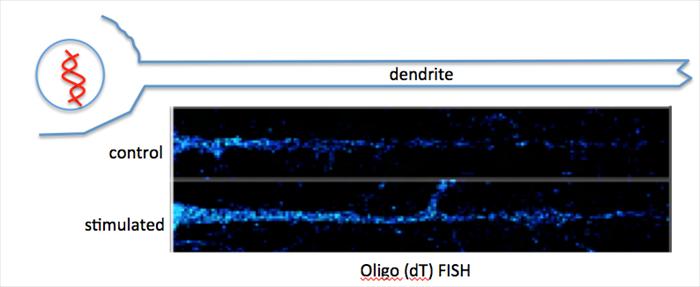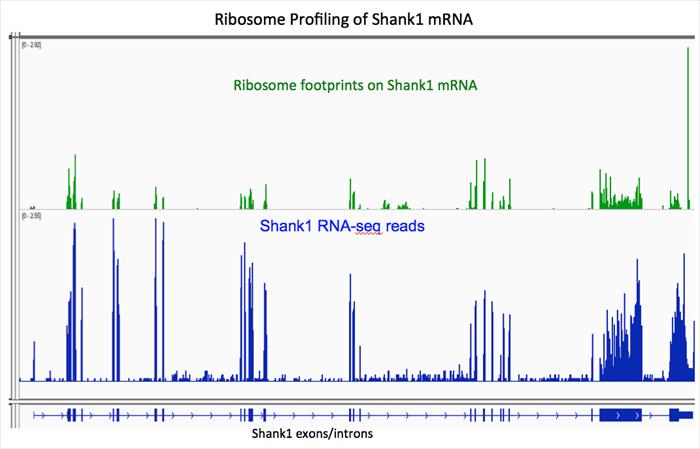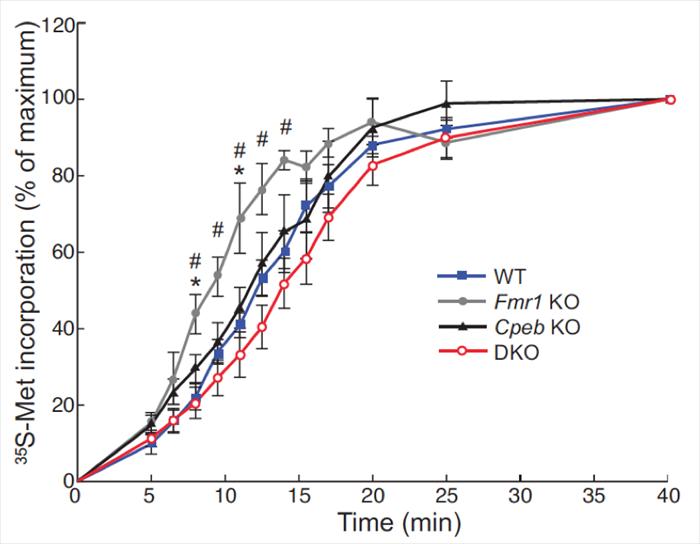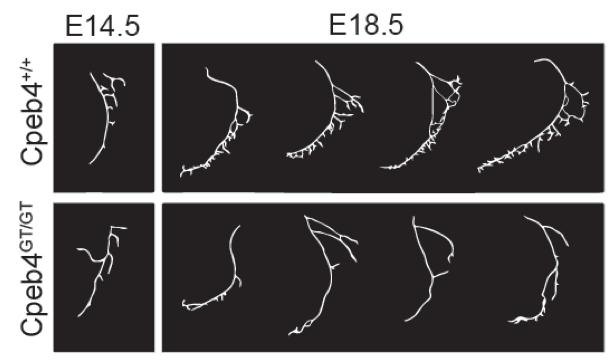Joel D. Richter, Ph.D.
Professor of Molecular Medicine
Arthur F. Koskinas Professor of Neuroscience
Program Director, Center for Collaborative Research in Fragile X
What we do...
We study the molecular biology of mRNA translational control by cytoplasmic polyadenylation and how this process regulates neuronal synaptic plasticity, learning, and memory. We investigate how neurologic diseases such as Fragile X and other autism spectrum disorders (ASDs) are regulated at the translational level.
Translational control by 3’ end formation
Many inactive mRNAs have short poly(A) tails and only when the tails are elongated does translation ensue. A key factor that regulates polyadenylation-induced translation is the RNA binding protein CPEB (Cytoplasmic Polyadenylation Element Binding Protein). CPEB binds specific 3’UTR cis elements in mRNAs and recruits unusual poly(A) polymerases and translation factors that extend poly(A) tails in the cytoplasm and promote translation.
Synaptic plasticity and learning and memory
CPEB and the cytoplasmic polyadenylation complex reside at postsynaptic sites of neurons in the mammalian central nervous system. In dendrites, this complex controls local mRNA polyadenylation-induced translation in response to synaptic stimulation. Synaptic plasticity, the ability of synapses to undergo long-lasting biochemical and morphological changes in response to stimulation, forms the underlying basis of learning and memory. CPEB knockout mice are defective for synaptic plasticity and hippocampal-dependent memory formation. Hippocampal neurons depleted of other components of the cytoplasmic polyadenylation complex with lentivirus-based shRNAs also display defects in synaptic plasticity, indicating that polyadenylation-induced translation forms an essential mechanism to control translation and higher cognitive function.
Neurons derived from CPEB knockout mice have alterations in metabolism in that ATP production by mitochondria is compromised. This deficit in ATP reduces dendrite arborization and is observed in both neurons cultured in vitro and neurons expressing an shRNA for CPEB in vivo.
Oligo (dT) fluorescent in situ hybridization (FISH) of a cultured hippocampal neuron showing an increase in dendrite polyadenylation in response to synaptic stimulation.
Neurologic disease
The Fragile X Syndrome (FXS) is the most common heritable form of mental retardation and the most common monogenic cause of autism. FXS results from a CGG expansion in and transcriptional silencing of the FMR1 gene. FMR1 encodes FMRP, an RNA binding protein that normally represses translation in the brain. In the absence of FMRP, aberrantly high translation likely causes FXS in both humans and a mouse model. Restoration of normal translation occurs in FMRP/CPEB double knockout mice. Moreover, rescue of synapse function and learning and memory also occurs in FMRP/CPEB double knockout mice, suggesting that CPEB might be a novel therapeutic to reverse FXS. Rescue of FXS in double knockout mice may involve altered rates of ribosome translocation on mRNA (i.e., polypeptide elongation). Deciphering which mRNAs are loaded with ribosomes that travel at different rates is daunting, but whole genome ribosome profiling and RNA-seq may shed light on this process.

Aberrant nest building in Fmr1 knockout mice (compare to wild type) is rescued in Fmr1/CPEB double knockout mice.

Ribosome profiling and RNA-seq of shank1 mRNA from mouse brain.

Elevated ribosome translocation speed in in Fmr1 knockout mouse brain (compared to WT) is rescued to normal levels in the Fmr1/CPEB double knockout brain. Ribosome translocation speed was measured in brain lysates derived from wild type, Fmr1 KO, CPEB KO, and Fmr1/CPEB double KO mice supplemented with 35S-methionine/cysteine and hippuristanol, which inhibits initiation.

Reduced axon branching in the phrenic nerve of a CPEB4 gene trap mouse (CPEB4GT/GT) compared to wild type (CPEB4+/+). Data from embryonic day 14.5 and 18.5 are shown.
